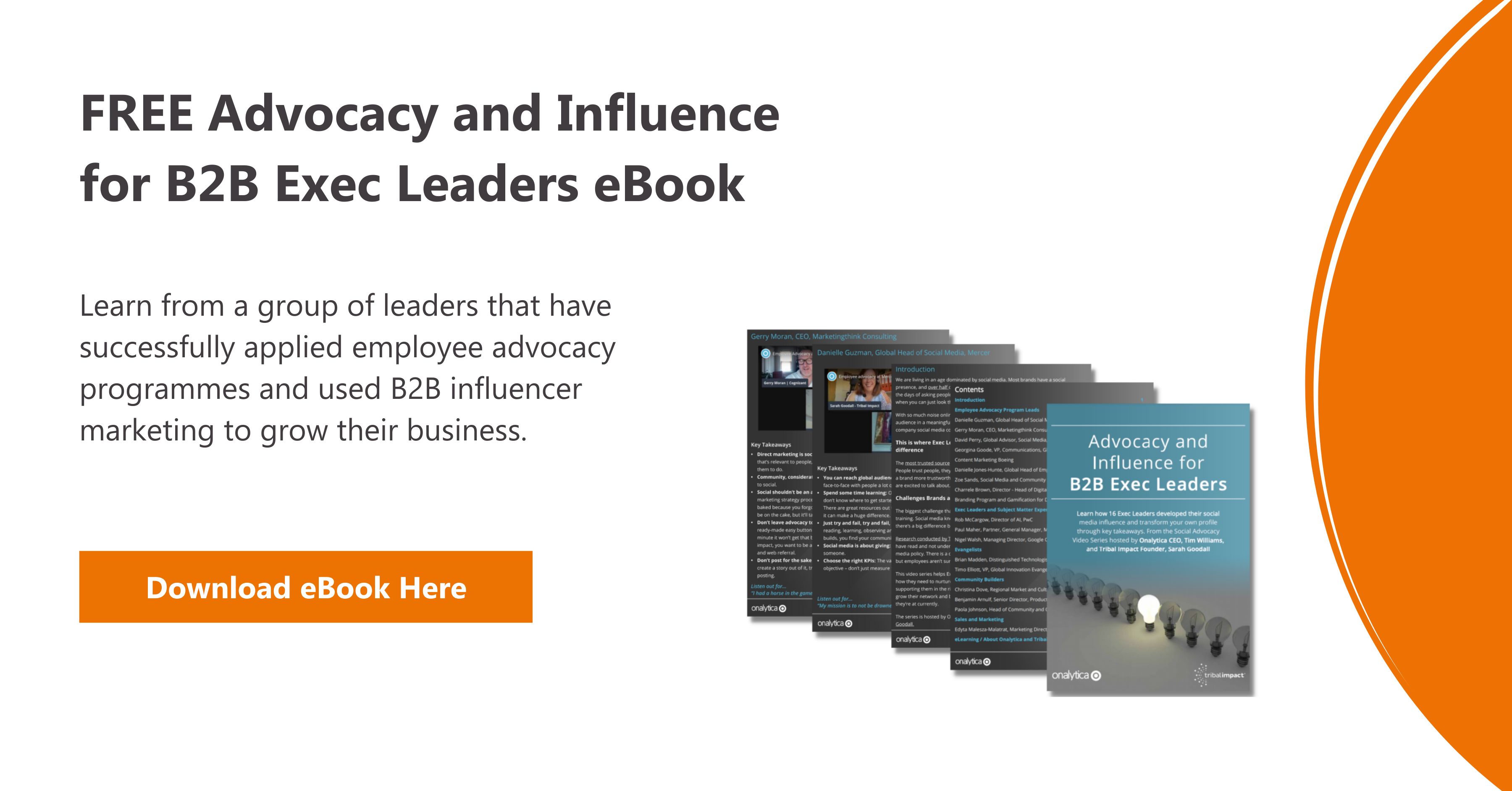
When leaders are active on LinkedIn, it can have very powerful results. Brandfog’s Global Social CEO Survey found that 75% of people believed leaders who were active on social media were better leaders, 70% thought it built brand trust, and 55% felt it influenced purchase decisions.
Despite this, some leaders can be reluctant to embrace posting on LinkedIn.
Learning how to overcome leadership objections to social media is a skill every trainer or coach needs. We’ve heard everything from “I’m too busy” to “I’m too shy” and even “I want to move away from social media.”
Leaders are often the most difficult people to get involved with your programme, but that doesn’t mean it’s a hopeless task!
How To Handle Leadership Objections To Social Media
The most common objection we hear from leadership is that they don’t have time post on LinkedIn.
But people make time for what’s important to them. When someone says they don’t have enough time to do something, it really means that they don’t see enough value in it.
Understanding someone’s motivations can form the basis for how you overcome a leader’s reluctance towards social media.
Someone’s motivation usually depends on their role. For instance, subject-matter experts will want to connect with fellow experts, deepen customer relationships, and strengthen their digital influence. They’re less likely to be interested in becoming a celebrity or influencing deal or close rates.
While having digital influence and becoming a celebrity might sound similar, the way you phrase something can impact if someone connects with what you’re saying, so consider those subtle differences when you’re trying to win someone over.
Salespeople, meanwhile, will care about pipelines and close rates. They’ll want to know about the impact they could have on the business, how to expand customer relationships, and prospecting at scale.
Mentioning employee engagement or content creation is likely to put them off. Talking just about content creation will make it seem like more work without them fully understanding the impact it could have.
One of the techniques we recommend for overcoming objections is called LEAR:
- Listen – Pay attention to what they’re telling you.
- Acknowledge – Clarify what they’ve said and show empathy.
- Explore – Go deeper. Their objection could be masking a motivational issue.
- Respond – Address their concerns.
If they’re truly reluctant, remember: it isn’t your job to convince someone!
If they have to be dragged, kicking and screaming, on to social media, it’s never going to work for them.
Your time and energy are better spent on people who do see the value in using social media than winning over people who just don’t get it. You never know – you might win them over simply by showing them other people’s results!
Building Authenticity With Blogs
Only 47% of people trust content shared by CEOs, according to the Edelman Trust Barometer. It probably doesn’t help that many CEOs only share branded content.
Audiences are less likely to engage with, and trust, branded content. So if that’s all that they see someone sharing, it can cause them to switch off.
Businesses that share personal stories and passions build their brand, and their employees’ brands, much better.
Leaders often have in-depth knowledge and a forward-thinking mindset. These are the kinds of areas that make for interesting blog posts. When tied in with personal stories, personality, and humility, leaders can inspire their followers and help to build the trust that executives so often lack on social media.
Popular leadership hashtags on LinkedIn like innovation and personal development have tens of millions of followers. This means that posts on there have the potential to go viral with very little effort – other than writing a great post!
You don’t have to have thousands of connections for a post to go viral on LinkedIn, either. We’ve seen posts go viral when someone has 500-1000 connections.
Retaining Talent
LinkedIn is also a surprisingly good place for attracting and retaining talent. In fact, it’s second only to employee referrals in the quality of candidates that it attracts.
For this to work, though, businesses need a strong employer brand – 75% of candidates research a company online before applying for a role.
A stronger employer brand also means you’ll have a 31% greater InMail acceptance rate, which is crucial to tapping into passive candidates.
When executives create content on LinkedIn, they show that they really do live and breathe what the company stands for. It sends a clear message that will stand out among the noise and attract higher-quality candidates for roles. These higher-quality candidates, who buy into the company’s mission, can then go on to be happier, more productive, and more likely to stick around.
Conclusion
Getting executives to start posting content on LinkedIn isn’t always easy. The first step is to understand what motivates them so that you can really understand, and counteract, their objections.
You won’t be able to convince everyone, so always focus your time and energy on those who will understand the benefits and are easier to encourage.
More reluctant LinkedIn users may be won over by seeing the results other leaders and/or employees get on the platform, rather than by being dragged on to it when they’re convinced it isn’t for them.
Once they’ve overcome their reluctance, they can start with a small commitment every day. We recommend our coffee cup routine, which starts with just a few minutes each day, and is tied to a daily habit most of us already have – drinking a cuppa!
This small commitment will build up their trust, branding, and confidence on LinkedIn. Over time, they’ll begin to see the difference this can make to the company’s employer brand, brand trust, and the sales pipeline
